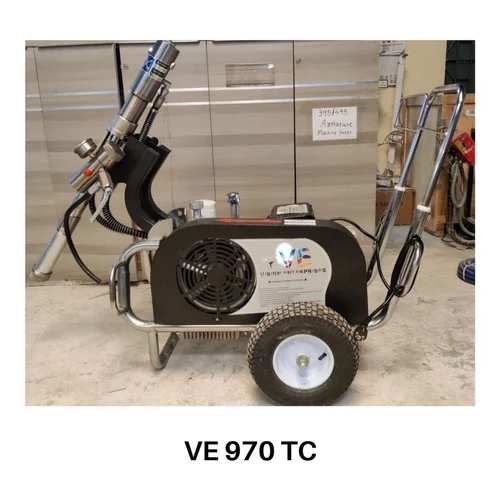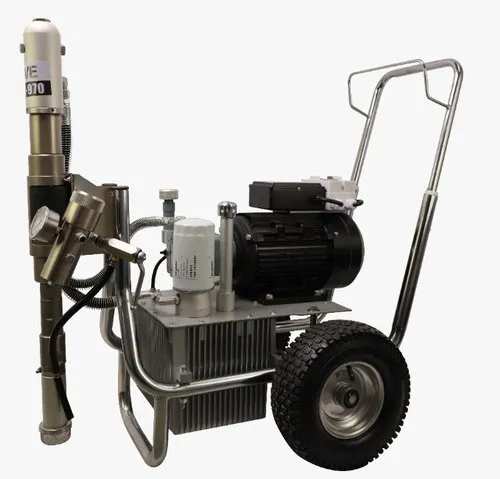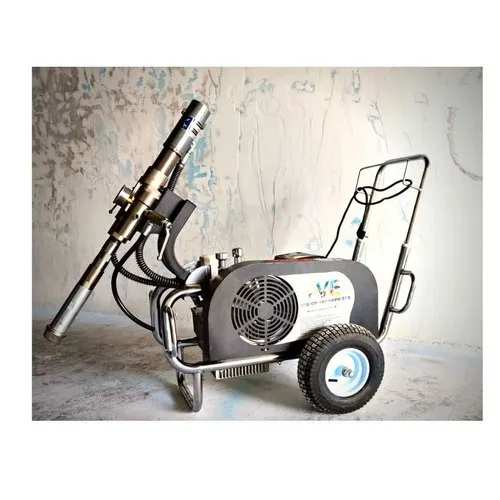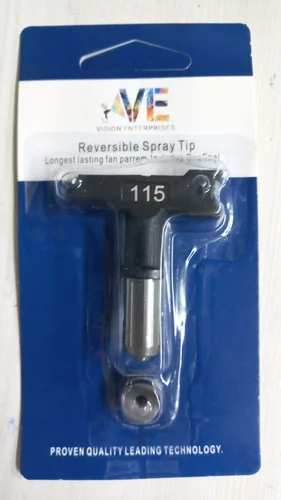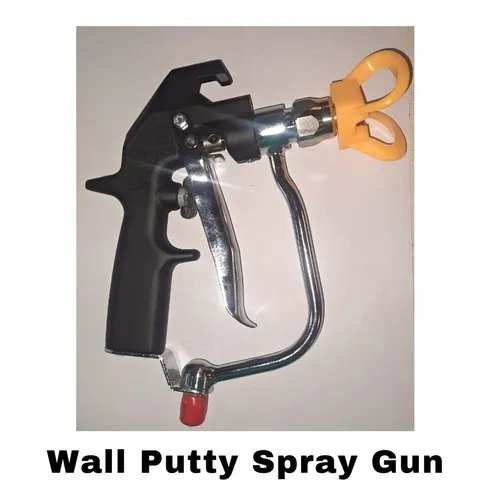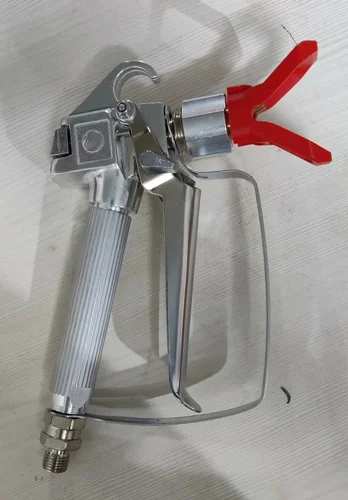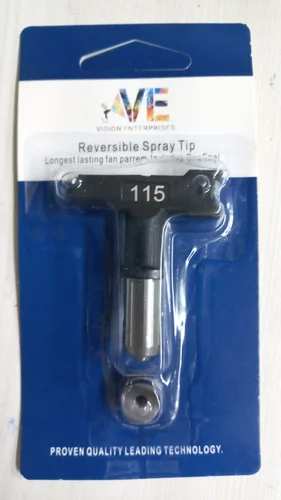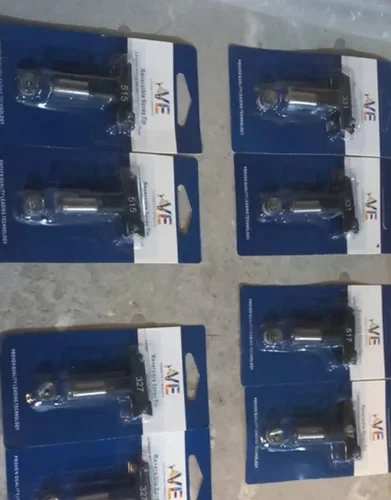Automation Grade: Semi-Automatic Product Type: VE Usage/Application: Wall Putty and Paint Sprayer Material: SS Voltage: 220V Model: VE 970 Power source: Electric Vision Enterprises 970 TC Wall Putty Spray Machine seems to have piqued your interest! It's a versatile tool that can handle both paint and putty applications, making it a popular choice for both professional contractors and DIY enthusiasts. Here's what I can tell you about it: Key Features: Piston Pump and Belt Drive: Provides consistent and powerful pressure (up to 13.5 lpm) for effortless spraying of thick putties and paints. Multi-Material Application: Handles a wide range of fluids, including water-based and solvent-based paints, primers, putties, and dampproofing materials. Semi-Automatic Operation: Features a foot pedal or trigger control for convenient and hands-free spraying. Durable and Portable: Made from stainless steel for sturdiness and longevity, while remaining relatively lightweight (45 kg) for easy transport. Customizable Spray Pattern: Adjustable nozzle allows for varying spray patterns to suit different applications, from fine finishes to covering large areas. Advantages for Putty Spraying: Speed and Efficiency: Significantly faster than manual application or roller use, saving you time and effort on large projects. Superior Finish: Consistent pressure and controlled spraying lead to a smoother, blemish-free putty surface, reducing the need for extensive sanding. Reduced Fatigue: Eliminates the need for manual application, minimizing physical strain and fatigue. Versatility: Handles various putty types and thicknesses, offering flexibility for different project needs.
Send Message
